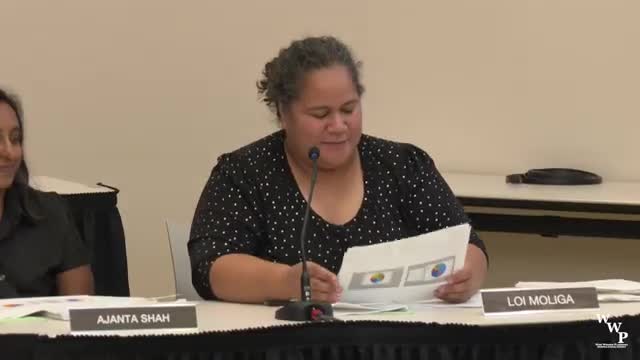School Incident Reports Show Higher Numbers in Middle School Compared to K-5
August 01, 2025 | West Windsor-Plainsboro Regional School District, School Districts, New Jersey
This article was created by AI summarizing key points discussed. AI makes mistakes, so for full details and context, please refer to the video of the full meeting. Please report any errors so we can fix them. Report an error »

In a recent West Windsor-Plainsboro Board meeting held on July 29, 2025, discussions centered around student safety and incident reporting, revealing insights into the evolving dynamics of school environments post-COVID. As board members gathered under the bright lights of the district's meeting room, the atmosphere was charged with a commitment to understanding and improving student experiences.
One of the key topics was the breakdown of founded incidents across different school levels. A board member noted a surprising trend: while middle and high schools traditionally report higher incident numbers, the K-5 level showed a significant 56% of founded incidents. This raised questions about the nature of reporting and the differences in how younger students communicate issues compared to their older peers. It was highlighted that middle school students are more likely to report incidents themselves, often seeking help from trusted staff members, which contributes to the higher numbers in that age group.
The conversation also delved into the complexities of categorizing incidents. A board member sought clarification on the distinctions between "no identifiable characteristics" and "other" in incident reports. The explanation revealed that many reports stem from conduct violations that do not necessarily fit into specific categories, emphasizing the subjective nature of how incidents are perceived and reported. For instance, a simple altercation might not be classified as founded if it lacks context related to identifiable characteristics like race or ethnicity.
Moreover, the board discussed the importance of comparing their incident data with similar districts. However, it was noted that the district's reporting is often delayed, with public data typically lagging by 18 months to two years. This delay hinders real-time comparisons but reassured members that their trends align with state averages.
Throughout the meeting, the emphasis on "belonging" resonated positively among board members, suggesting a shift in focus from mere diversity to fostering an inclusive environment where all students feel valued. This shift reflects a broader understanding of the importance of emotional safety in schools, particularly in the wake of the pandemic.
As the meeting concluded, the board's commitment to enhancing student safety and well-being was clear. The discussions not only highlighted current challenges but also pointed towards a future where schools can better support their students, ensuring that every child feels a sense of belonging in their educational journey.
One of the key topics was the breakdown of founded incidents across different school levels. A board member noted a surprising trend: while middle and high schools traditionally report higher incident numbers, the K-5 level showed a significant 56% of founded incidents. This raised questions about the nature of reporting and the differences in how younger students communicate issues compared to their older peers. It was highlighted that middle school students are more likely to report incidents themselves, often seeking help from trusted staff members, which contributes to the higher numbers in that age group.
The conversation also delved into the complexities of categorizing incidents. A board member sought clarification on the distinctions between "no identifiable characteristics" and "other" in incident reports. The explanation revealed that many reports stem from conduct violations that do not necessarily fit into specific categories, emphasizing the subjective nature of how incidents are perceived and reported. For instance, a simple altercation might not be classified as founded if it lacks context related to identifiable characteristics like race or ethnicity.
Moreover, the board discussed the importance of comparing their incident data with similar districts. However, it was noted that the district's reporting is often delayed, with public data typically lagging by 18 months to two years. This delay hinders real-time comparisons but reassured members that their trends align with state averages.
Throughout the meeting, the emphasis on "belonging" resonated positively among board members, suggesting a shift in focus from mere diversity to fostering an inclusive environment where all students feel valued. This shift reflects a broader understanding of the importance of emotional safety in schools, particularly in the wake of the pandemic.
As the meeting concluded, the board's commitment to enhancing student safety and well-being was clear. The discussions not only highlighted current challenges but also pointed towards a future where schools can better support their students, ensuring that every child feels a sense of belonging in their educational journey.
View full meeting
This article is based on a recent meeting—watch the full video and explore the complete transcript for deeper insights into the discussion.
View full meeting
